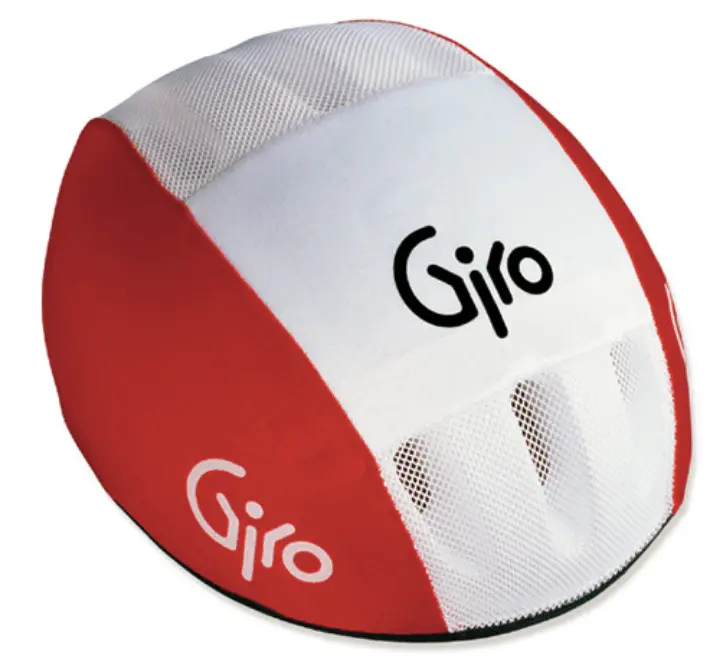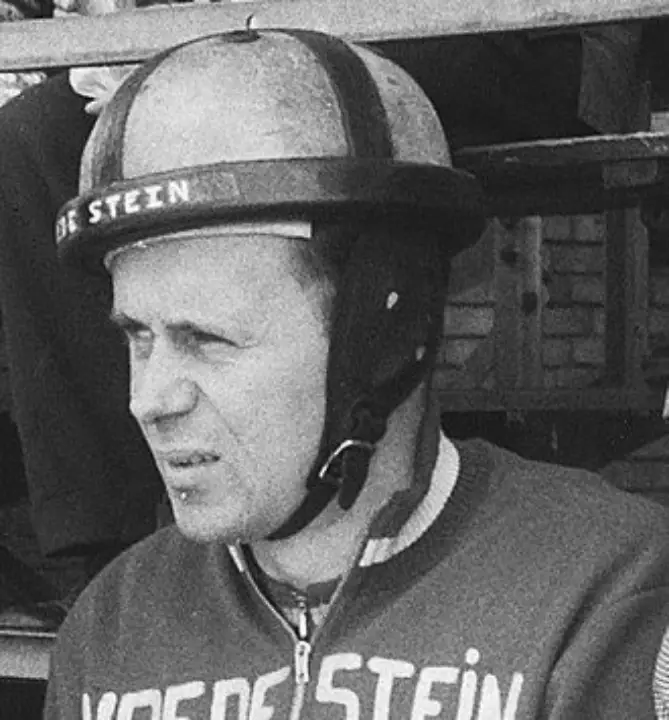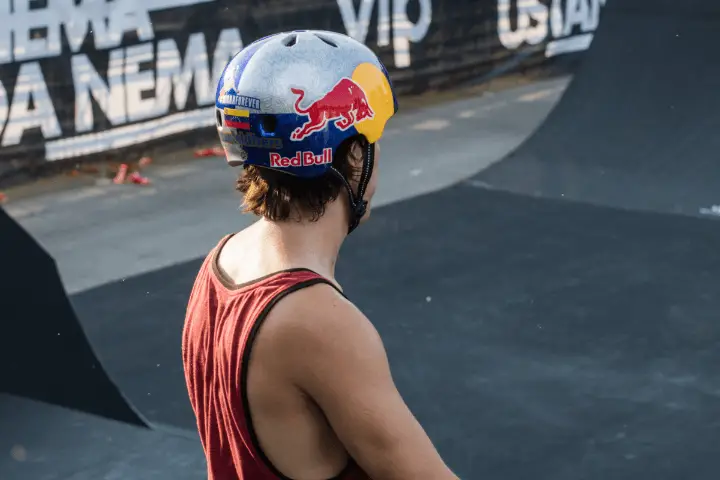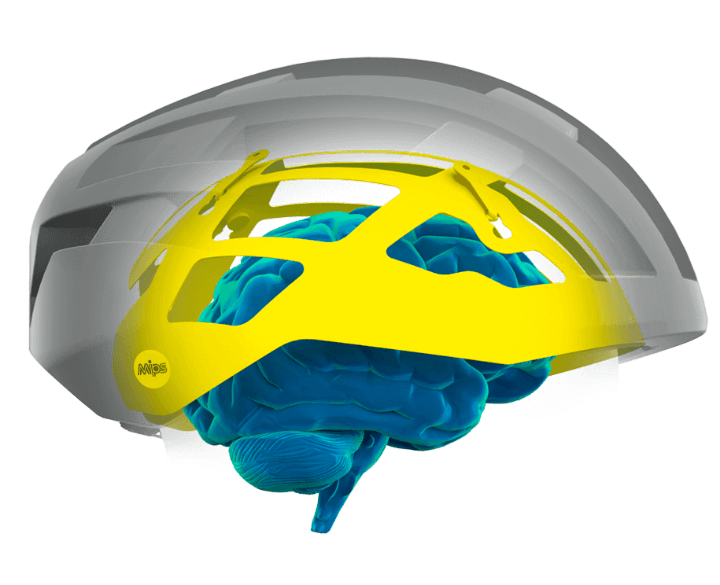Cycling and pretty much all other wheeled sports are dangerous. Generally, the fewer wheels you have on your vehicle the more likely you are to crash and injure yourself. For example, you’re much more likely to fall off a unicycle than a car. This is why it’s important to wear a helmet, especially with BMX bikes who have two wheels.
There’s a lot of protection you can use when riding a bike. You can protect virtually your whole body with the number of products you can buy today. Helmets will always remain the most important thing you can wear on a bike.
Now we’ve established how important it is to wear a helmet when riding we can go through the best helmets you can buy and how to make sure you’re buying the right one. As the sport has expanded there’s become a large number of variations in the fit, style and comfort to choose from.
Our top choices
Our Choice
Shadow Classic
Classic by design, classic by name. This TSG helmet has been proven over years of use by many riders. Riders enjoy the optimized fit of this helmet and the simple but effective design.Check Price
Cheapest
S1 Lifer
S1 have created this helmet as a helmet perfect for children and beginners. They use the same design as cheap helmets but with an innovative new type of foam that is much more protective.Check Price
Upgrade Pick
POC Crane Fabio ED
POC create very good products. Extremely high-quality but not cheap. The experience they’ve gained from all other action sports is summed up in this sleek signature helmet.Check Price
Our Choice
Shadow Conspiracy Classic Helmet
- High-quality materials for durability and safety
- Low-profile, original design
- Effective ventilation system with 10 vents
- Provides a custom fit with dual foam pads
- Exceeds EN and CPSC safety standards
- Focus on traditional design
- May be perceived as too simplistic
- Limited color and style options
- Primarily suited for BMX riding
$55 from DanscompAffiliate Link
Shadow Conspiracy, a name you might recognize from my discussion on the top BMX chains, sets a high benchmark in the BMX industry not just for its chains but for a broad spectrum of BMX components. Their offerings go beyond chains, covering almost every conceivable BMX part, tool, protection gear, and apparel, short of complete bikes and frames. These products aren’t just popular; they’re the choice of some of the world’s leading BMX riders, underscoring the brand’s commitment to quality and performance.
The Classic helmet is a testament to Shadow Conspiracy’s dedication to merging traditional design with modern safety and comfort. Its design is straightforward, authentic, and maintains a low profile, making it a staple in any BMX rider’s gear. It features 10 expertly designed vents placed strategically to optimize airflow without compromising the helmet’s integrity or durability.
Reminiscent of a refined version of the original helmets designed for children, the Classic helmet addresses every shortfall of those early models. Unlike the often poorly constructed kids’ helmets, the Classic helmet combines High Impact ABS with a lightweight EPS core liner. This combination, along with dual sets of foam pads, ensures the impact force is evenly distributed, providing a snug, custom fit for every rider—a stark contrast to the less sophisticated options of the past.
The rigorous testing regimen Shadow Conspiracy applies to its products, like the Shadow Interlock chains, extends to the Classic helmet. It not only meets but exceeds EN and CPSC safety standards, offering peace of mind with its superior protection.
The Shadow Conspiracy – Classic Helmet Line
Budget Pick
S1 Lifer BMX Helmet Review
- EPS Fusion Foam offers superior protection
- Passed ASTM and CPSC high impact tests
- Excellent protection-to-price ratio
- Multi-impact certification extends usability
- Ideal for children and beginners
- Less customizable and visually appealing
- Design is basic
- Focus on safety over style
- Limited to specific target groups
- May not meet the needs of advanced riders
S1 emerged as a response to the alarming inadequacy of traditional soft foam skate helmets, which failed to adequately protect riders. Through rigorous testing, S1 discovered that impact energy was not being effectively absorbed and dispersed by these helmets, but rather, was directly transferred to the rider’s skull.
To combat this issue, S1 developed the Lifer helmet, utilizing EPS Fusion Foam, which boasts up to five times more protection than standard foam used in other helmets. This advancement allowed the Lifer helmet to surpass the ASTM multiple impact test and the CPSC high impact test, setting it apart from most soft foam helmets on the market.
The Lifer helmet is particularly recommended for children and beginners, not because of its aesthetics or customizability, but for its unparalleled protection-to-price ratio. While its design closely mirrors that of basic BMX helmets in terms of vents and padding, the quality of its foam significantly exceeds that of the helmets typically marketed to kids or novices.
A noteworthy feature of S1 helmets, including the Lifer, is their ‘multi-impact’ certification. Unlike the common advice to replace helmets after any significant impact, S1’s Lifer helmet is designed to withstand multiple impacts without compromising safety. This achievement is particularly significant for an affordable bike helmet, offering both durability and continued protection after a fall.
Premium Pick
POC Crane MIPS Fabio ED
- Minimalist design with high functionality
- MIPS technology for added safety
- Innovative multi-density liner
- Unique size adjustment system for perfect fit
- Superior ventilation with 10 large vents
- Premium products often come at a higher price
- Minimalist design may not appeal to all preferences
- Focused primarily on safety
- Smaller range of sizes and fits
POC Sports stands out in the world of action sports protective equipment, drawing parallels to Apple for their minimalist yet highly functional design philosophy. Renowned for their superior quality and sleek aesthetics, POC offers a range of helmets, eyewear, body armor, apparel, and accessories catered to action sports athletes. Since their founding in Sweden in 2005, their motto has been to protect lives and mitigate the consequences of accidents for athletes and aspirants alike, acknowledging the inevitability of accidents but focusing on reducing their impact.
The commitment to quality and innovation at POC is evident through their establishment of the POC Lab and WATTS Lab. These forums are dedicated to research and development in medicine and safety, housing experts who contribute to the advancement of protective gear.
Fabio Wibmer’s signature helmet showcases the blend of style and safety that POC embodies. Wibmer, an Austrian trials rider and YouTube sensation, transitioned from motocross to trials riding, inspired by Danny MacAskill. His achievements, including the prestigious GoPro of the World – Best Line contest in 2015, underline his versatility across disciplines.
The MIPS-approved Crane helmet, often spotted beneath Wibmer’s Red Bull livery, exemplifies POC’s innovative approach to helmet design. It features a durable, dent-resistant shell and a novel liner that combines multiple densities for comprehensive impact protection. A stiffer outer layer manages severe impacts, while a softer inner layer cushions the head against lower energy impacts, distributing force across the helmet to mitigate shock.
Comfort and fit are paramount for POC, demonstrated by their unique size adjustment system that rivals the fit of top mountain bike helmets. With 10 large vents for enhanced airflow, an innovative size adjustment feature, a sleek design, and the inclusion of MIPS technology, the Crane helmet is a standout choice for safety and style in action sports.
TSG Dawn Helmet
- Expertly designed
- Niche design
- Shock-absorbing padding
- Airflow vents
- Fully certified
- Limited appeal
- Specific design
- Preference varies
- Niche limitation
- Comfort variability
Technical Safety Gear (TSG) specializes in crafting protective gear tailored for the action sports community. With a team at the helm that includes seasoned snowboarders, freeskiers, skaters, BMX riders, and mountain bikers; TSG possesses an insider’s understanding of what defines an exceptional BMX helmet.
Back in 1988, the diversity of cycling products that enthusiasts enjoy today was lacking. Recognizing this gap, TSG leveraged its extensive expertise to design, construct, and rigorously test a new wave of protective gear. What sets TSG apart is its commitment to excellence in product development for specific sports. While targeting a broad audience with a generic product might seem appealing, TSG focuses on creating features that meet the unique demands of each sport.
The Dawn helmet exemplifies TSG’s niche approach within the BMX arena. It features a classic full-cut style with integrated ear protection, reminiscent of early skateboarding gear. This helmet is crafted using TSG’s renowned hardshell construction technique, employing a singular mold for unmatched durability. Understanding that comfort is as critical as safety, the Dawn helmet is equipped with shock-absorbing EPS foam padding and an innovative airflow channel system supported by 14 air vents, ensuring comfort even after prolonged use.
Although the Dawn helmet’s distinctive style might not be for everyone, its thoughtful design and adherence to stringent safety standards, including CE EN 1078 and CPSC, underscore TSG’s dedication to quality and safety. This helmet not only pays homage to the legacy of skate and BMX culture but also represents a significant advancement in protective gear technology.
Bern Watts BMX Helmet 2024
- Versatile for multiple sports
- Unique, innovative designs for all-seasons
- MIPS technology reduces risk of brain injuries
- Distinctive, stylish design with a hard visor
- Designed for everyday urban cyclists
- Unconventional shapes
- Limited movement with MIPS
- Style-specific to certain tastes
- Vent design may seem odd to some users
- Focus on urban cycling
Bern stands out as a versatile manufacturer of protective gear, serving enthusiasts of street sports, mountain activities, and water adventures alike.
For over a decade and a half, Bern has been at the forefront of designing innovative helmets that are not only functional but also feature unique, slightly unconventional shapes. These helmets are designed to be perfect for any weather condition, catering to riders across all seasons and climates.
The Watts helmet by Bern is celebrated as an everyday essential for the urban cyclist, boasting a distinctive baseball cap design with a sturdy visor. This design, coupled with its unconventional vent layout, might remind one of a snowboarding helmet, yet it’s engineered for the cyclist navigating city streets.
A critical aspect of the Watts helmet is its integration of the MIPS (Multi-Directional Impact Protection System) technology, increasingly standard in high-quality helmets for its potential to lessen the severity of brain injuries in cycling accidents. This system allows the helmet’s outer shell to move up to 15mm in any direction upon impact, significantly reducing the risk of rotational injuries. Though the movement might seem minimal, it’s a pivotal feature in safeguarding against the complexities of real-world cycling falls.
Fox Flight Sport Helmet
- Tailored for dirt jump and BMX riding
- Innovative ventilation system for improved airflow
- Durable ABS hard plastic outer shell
- Affordable, making it ideal for beginners
- High-quality padding for comfort
- Single-density EPS liner of moderate quality
- Less stylish compared to other Fox helmets
- Limited to basic protection needs
- Popular branding
Fox, a brand traditionally associated with engine-powered action sports, demands a level of protection that often exceeds the requirements of BMX and mountain biking. However, within their extensive collection, the Flight Sport helmet stands out as a simpler, more focused option tailored for dirt jump and BMX enthusiasts.
The Flight Sport helmet maintains a familiar shape comparable to many others in the BMX and dirt jump sector, but distinguishes itself through its innovative ventilation system. It features eight strategically placed vents—two in front, two in the back, and four on top. These top vents are designed with angled plastic channels that direct air onto the rider’s head, a thoughtful detail aimed at improving comfort during intense rides. The helmet’s outer shell is constructed from ABS hard plastic, a material favored by many riders for its durability and impact resistance.
Beneath this robust exterior lies a single-density EPS liner. While not the highest quality on the market, this liner plays a crucial role in keeping the helmet’s price accessible, making it an appealing choice for budget-conscious riders. The helmet also includes high-quality padding, affixed with Velcro, to enhance comfort and fit.
Despite its many functional features, the Flight Sport helmet borrows aesthetic cues from ski helmets, albeit without ear padding. This design choice, along with its affordable pricing, positions it as an attractive option for beginners. However, the helmet’s popularity and association with the Fox brand may somewhat overshadow its less impressive style compared to other helmets in Fox’s lineup.
Bell Local Helmet
- Prioritizes functionality and safety
- Classic design integrated
- Padded ratchet strap for an improved, personalized fit
- Efficient ventilation system keeps riders cool
- Heritage of innovation and reliability
- Aesthetic design may is simplistic
- Focus on functionality
- Ventilation design is basic
- Emphasis on traditional styles
Bell, founded in the 1950s by Roy Richter, stands as a pioneer in cycling protection, catering to the high-speed demands of riders from its inception. Richter’s vision was to fulfill the safety needs of speed enthusiasts who, initially skeptical about the efficacy of protective gear, gradually recognized the crucial importance of such equipment amidst the harsh realities of high-speed impacts.
At Bell, functionality takes precedence over aesthetics. The company’s philosophy centers on the performance and reliability of its products rather than their appearance. This approach underscores Bell’s commitment to safety and effectiveness, embodying the principle that a well-performing product is infinitely more valuable than one that merely looks good.
The Local helmet exemplifies Bell’s focus on prioritizing needs over looks. It combines a classic skate style with contemporary comfort and technology, resulting in a helmet that not only offers superior protection but also fits better than its predecessors. Enhanced with a padded ratchet strap, the Local helmet allows for a refined fit, adapting closely to the rider’s head.
Ventilation in the Local helmet is particularly noteworthy. It employs a straightforward yet efficient design with rectangular slits—two at the front and back, plus a cluster of six atop the helmet. This arrangement ensures effective cooling while maintaining optimal protection, a testament to Bell’s dedication to combining simplicity with functionality.
Giro Quarter MIPS Helmet
- Innovative 180-degree padding for superior comfort
- Lightweight design enhances user experience
- MIPS technology integration for increased safety
- Established brand with a history of design solutions
- Focus on performance and user experience
- Innovative 180-degree padding for superior comfort
- Lightweight design enhances user experience
- MIPS technology integration for increased safety
- Established brand with a history of design solutions
- Focus on performance and user experience
Giro, established by Jim Genets in 1985, is a pioneering brand in the cycling and action sports helmet industry. Genets founded Giro with the goal of delivering design solutions that not only enhance the user’s experience but also improve performance. The brand’s ethos, encapsulated in its original logo symbolizing “tour or circuit,” reflects the quintessential joy and freedom of bike riding.
In its early days, Giro made a significant impact with its introduction of scientifically-backed solutions and lightweight products. The Prolight helmet, Genets’ first foray into lightweight helmet design, was unveiled at the Long Beach bike show, generating an impressive $100k in orders—a testament to the market’s readiness for innovative solutions.
The Quarter helmet is a testament to the evolution of Giro’s design philosophy, offering advancements far beyond the original designs. It diverges from the traditional ratchet strap or foam fit, instead utilizing 180 degrees of padding to ensure a snug, comfortable fit. This level of comfort and the precision fit offered by such a design are still relatively rare in the market, making the Quarter helmet a standout choice for those prioritizing comfort.
However, the extensive use of padding in pad-fit helmets like the Quarter does have its drawbacks, notably in ventilation. To accommodate the padding, Giro has had to limit ventilation to thin slits at the front and rear of the helmet, which could be seen as a compromise for users who value robust airflow during intense activities.
An intriguing aspect of the Quarter helmet is the integration of MIPS technology with the 180-degree padding system. This design allows the head to “float” within the helmet, providing a lightweight and comfortable fit that enhances safety without sacrificing comfort.
Fox Head Transition Mountain Bike Helmet
FOX reigns supreme in the action sports arena, commanding respect in the motocross and mountain biking sectors for its superior suspension systems, gear, and apparel. Their prowess in suspension technology, as highly regarded by mountain bikers and motocross enthusiasts alike, is evident on our dirt jump forks page, showcasing FOX’s widespread admiration.
The Transition hardshell helmet is a product of FOX’s extensive expertise in mountain bike helmet design, now ingeniously applied to a standout BMX offering. This helmet’s design is notably distinctive, offering a fresh take on traditional bike helmet aesthetics.
Designed with the intention of setting it apart, the Transition helmet features enhanced head coverage and innovative aerodynamic venting. However, the reception among riders regarding these features has been mixed. Some riders have humorously dubbed it ‘The Heat Stroke’, critiquing the helmet’s ventilation system for its tendency to trap heat, rather than promote airflow.
Despite these criticisms, the helmet has commendable attributes. It offers increased head coverage without compromising on lightness or durability, marking significant achievements in protective gear design. However, the helmet’s less-than-ideal padding quality and limited adjustability have been noted as drawbacks, affecting its overall ranking and appeal.
History of the BMX Helmet


Bicycle helmets need to be lightweight, offer good ventilation and refrain from impeding the riders peripheral vision. Cycling can be a very strenuous sport, significantly raising your body temperature. The head needs to regulate its temperature when doing sport.
A very ineffective style of helmet that’s effectively a leather hairnet was used up until the 1970s. There was virtually no impact protection with these contraptions. The best you could hope for was scratch and scrape prevention.
During and after the 70s the bicycle boom took off in America. Many more adults took up the sport and better protection was necessary. Bell Sports and MSR were two manufacturers that took on this job. The polystyrene liners from motorcycle helmets were used as a base for these new designs.
Polycarbonate shells surrounded the polystyrene to create the first hard-shelled helmet, by Bell Sports, in 1975.
10 years later manufacturers were making quite a lot of progress. The Snell B85, B90 and B95 became the widely accepted standard. Ventilation was still virtually non-existent but at least riders had some impact protection.
It wasn’t until the 1990s that the in-mould micro shell construction technique was invented. This method quickly spread throughout the world and before long the vast majority of helmets were constructed using this method.
As in-mould micro shell construction evolved further we saw great advances in fitting systems, ventilation and padding. From there we have made great advances in various types of helmet for all riders.
Types of Helmet
Different cycling disciplines benefit from different styles of helmet. You’ll have probably seen a lot of riders with different types of helmet when out and about. In this section we’ll go through the different types of helmet BMX, mountain bike, trail and commuter riders use when out on the bike.
Skate / BMX

If you read above you will see that some of the first bicycle helmets had a very similar shape to the modern-day BMX helmets. Skate helmet designs are generally a super simple shape that covers the whole head with no frills and a regular amount of ventilation.
Apart from racing cyclists, most BMX riders aren’t concentrating on generating or retaining speed. For this reason, BMX helmets concentrate on harder impact protection and style instead of aerodynamics and full-face protection.
There are a lot fewer vents on a skate/BMX helmet than there are on other helmets. BMX races and skatepark trick lines are generally quite short. Some vents are still pretty essential but you can get by with far less than a long-distance cyclist or commuter.
Full Face / Mountain Bike

Full face helmets are a lot closer to motocross helmets than other cycling helmets. Some mountain bikers and most BMX racers use lightweight motocross helmets.
Although they look almost identical, you shouldn’t use these lightweight full-face mountain bike helmets on a motorbike. While they provide a lot of protection they aren’t quite up to the standard of motorbike helmets. A full-face helmet protects the whole head as normal, along with a large visor and a chin bar.
Downhill mountain bikers exclusively use these helmets as they truly offer the most protection possible when riding a mountain bike. There are so many dangerous obstacles such as trees and rocks on a downhill mountain bike track that this extensive protection is necessary.
These helmets are made with EPS foam surrounded by a plastic shell made from composite materials such as fibreglass or carbon fibre.
Full face helmets cover a much larger amount of the head and face than normal helmets. For this reason, it’s quite necessary to include extra vents to facilitate the added temperature and sweat of a helmet that covers the full head.
Commuter / Road

Riding to work and around cities is becoming more and more common. Commuter riding hinders you with different issues to BMX riding. Peripheral visibility, the reduction of sweat and increased airflow over the head are all really important for a commuter helmet. After all who wants to get to work only to need another shower.
An aerodynamic, slightly elongated shape with an abundance of vents are the go-to style for these helmets. Having become the most popular cycling helmets in the world it’s no surprise they’ve evolved a lot since their inception.
Road riding will present a lot of different elements than mountain biking and manufacturers have used this to their advantage. You will often see commuter helmets with small mirrors, front/rear lights and sometimes even indicators.
What to look for in a BMX helmet?
Build and Protection Quality
This is a category that engulfs almost everything physical about a helmet. From the outer shell, foam and padding to the ratchet system and chin strap, it’s all-important when choosing a new product.
When testing out a helmet make sure to test out how easy it is to put on, how easy it is to tighten and loosen the straps and how well it stays on your head when you move abruptly.
In the UK and some other countries, there is no requirement to comply with any safety standards so it’s paramount that you do your own research. Ensure your target helmet has a high-quality outer shell (probably ABS), sweat-resistant padding and the latest quality EPS foam.
The fact that manufacturers can take no notice of safety standards makes it all the more worthwhile when you find a helmet that has passed all of your criteria. The UK’s British Standards Institute adopted Europe’s General Product Safety Regulations in 2005, with the GPSR standard being EN 1078. The standard for the BSI is BS EN 1078.
These standards are relatively basic and most British helmets meet these regulations. American Society for Testing Materials (ASTM) F1952-15 places alongside the Snell Memorial Foundation as the most sought after accreditation.
An ASTM accreditation is sought after by most full-face downhill mountain bike helmets as the testing is more rigorous than European and even Snell safety standards.
MIPS has been mentioned at the end of this article. It is a relatively new feature used on some high-quality helmets. To put it simply, this technology is placed between the padding and foam, which moves up to 15mm in all directions with the intention of reducing rotational injuries to the brain.
Fit
Since you’re already looking into the best BMX helmet to buy you may as well make sure you get it right. Riders often guess at their size and then complain when it completely doesn’t fit. Granted some companies aren’t great at sizing their products correctly but I think it’s even rarer for people to take correct head measurements.
When measuring your head you need to measure the circumference of your head just above your eyebrows. A 52cm – 55cm circumference is generally a small, 56cm – 60cm are medium and 60cm – 64cm are large.
These sizes aren’t a hard and fast rule but if you aren’t able to physically try on the helmet these sizes work quite well.
Comfort
Fit and comfort are quite closely related. Getting the right size is important but it’s just as necessary to try on a helmet and ensure it’s comfortable enough to wear for extended periods.
Foam and padding are the parts that make a helmet comfortable. EPS foam is generally the most comfortable foam integrated into a helmet. Attached to the foam is the padding. Normally designed by the helmets manufacturer and varying a lot between helmets.
When looking at the padding of a product you should check the placement of this padding on the head, the quality and the feel. You will produce a lot of sweat when riding and any padding that disintegrates as soon as it gets wet a few times won’t be useful after a few months.
Don’t fixate too much on the amount of padding. As long as there is enough to stop the front, back and top of your head from touching the foam you won’t notice anything extra.
Ventilation
I have mentioned ventilation a lot in this article. It’s more important than people think and it’s one of the aspects of a helmet that can be significantly different between two helmets.
Most BMX helmets have around 8 vents spread evenly over the centre of the shell. Years ago the majority of vents were mainly circular and didn’t have any targeted ventilation. It wasn’t long before innovative cycling companies changed up the direction, shape and number of vents on a helmet.
The importance of ventilation is for keeping the rider’s head cool. Directing the stream of air into various parts of the helmet to cover the head will reduce heat and sweat.
It’s much more important to use effective ventilation on a full face or race helmet. Full face helmets cover the whole head and thus need to reduce heat even more than normal. Racing bike riders exert tremendous amounts of energy for long periods. Keeping themselves cool places quite high up on the list of importance.
BMX riders on the other hand concentrate on short stints of exertion and need more force protection when performing tricks. Manufacturers see less of a necessity to remove much-needed strength on these helmets and so only use around 8 vents in a pretty standard pattern.
What is a MIPS Helmet?

A Multi-directional Impact Protection System is a Brain Protection System (BPS) that is integrated inside some newer high-quality bike helmets. The system is placed between the comfort padding and EPS foam. MIPS is used to reduce forces from impacting the skull when taking a tough fall.
Nearly every time a rider falls from their bike they hit their head at an angle, exerting forces in various, unnatural directions. A human brain really dislikes rotational forces and while any helmet will reduce impact injuries it will rarely reduce any rotational forces.
To combat this issue MIPS technology allows the outer layers of the helmet to rotate up to 15mm in all directions. When a helmet comes into contact with the ground it will use up this 15mm before rotating the riders head. It may not seem like much but after conducting over 31k tests it’s been statistically proven this technology helps riders.
Read more about MIPS technology here

Bicycle Helmet Laws
Laws surrounding bicycle helmets and protection are still hotly debated. Australia, Canada, Czech Republic, Finland, Iceland, New Zealand, Sweden, the USA and others all have some form of mandatory helmet law in place.
Several other countries have had forms of laws and other rules before abolishing them. The UK parliament was presented with a bill that proposed making wearing a helmet compulsory. Unanimously every major cycling organisation and magazine came out against the bill and it was quickly rejected. I think it’s very important to wear a helmet when riding a bike but the law shouldn’t force this.
Frequently Asked Questions About BMX Helmets
Is a cheap helmet as safe as an expensive one?
More expensive helmets will generally be better in a lot of aspects, although impact resistance won’t be altered a massive amount. You will be adequately protected with a cheaper helmet.
MIPS technology is relatively new and commonly only implemented in more expensive bike helmets. If you can afford it, a helmet with MIPS will add extra protection in some circumstances. Added comfort, customizability and extra features will benefit a more expensive helmet but these aren’t essential on a cycling helmet.
Where can I find a helmet for my XXL head?
Riders with larger heads don’t have to worry about being left out. While you may not be able to fit into any helmet, many companies are looking out for you.
While most headwear is created one size fits all, most cycling companies make helmets in a couple of different sizes. This takes care of most head sizes from the offset.
It’s also becoming more common for BMX helmets to have the rear adjustment for the back of your head. This feature is much better than the simple helmet shape you had to fit into previously. You’re able to move this band up and down so when a hat needs to sit higher on a riders head you can still tighten the band enough to be comfortable.
What if I have a bald head?
Having a bald head doesn’t affect which helmet you should pick in a safety sense. You should seriously concentrate on the comfort and fit of any helmet you’re looking to buy. Without any hair to provide padding between you and your helmet the quality of the padding is all the more important.
How do I decrease the amount I sweat when wearing a helmet?
Sweating is an obvious part of any exercise. The amount of sweat can be controlled though. For anyone riding their bike to work or to a social gathering the last thing you want to have to deal with is soaking wet, smelly hair from your helmet.
The most obvious way to reduce sweat is by buying a helmet with loads of ventilation. Take a look at some generic road racing or commuter helmets and you’ll see more vents than shell. As well as keeping weight down this will also direct a lot of air over your hair.
Some helmets can be purchased with a removable lining. This won’t do much for the amount of sweat you produce but being able to wash the lining will prevent any long term odours.
How Often Should You Replace a Bike Helmet?
There are several reasons and time limits to replace a bike helmet. Firstly, if you take a bad fall it’s highly recommended that you replace your helmet. Most riders don’t have the funds to follow this extreme advice so my recommendation would be to concentrate on the times you actively hit your head when you fall.
Secondly, if you notice a crack or damage on the shell or padded inner of your helmet you should get it replaced. Cracks are much less protective than regular plastic and will worsen very unpredictably when they take a secondary impact.
Finally, if you don’t run into any of the reasons above, most companies and research institutions recommend a life cycle of 5 to 10 years. The US Consumer Product Safety Commission (CPSC) agrees with the above timeframe. On the other hand, The Snell Memorial Foundation, who certify helmets for safety, state a firm 5 years.


